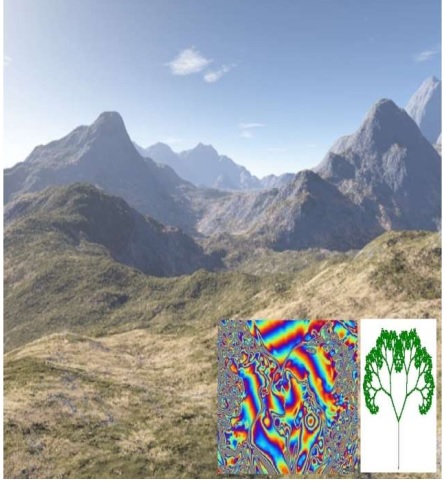SRTM DEM Based Neotectonics From Non-Linear Analysis: A Paradigm Through Fractal Analysis
Keywords:
surface roughness, Gliding Box Technique, Fractal Dimension, SRTM DEM, SuccolarityAbstract
Neotectonics amend the river base and causes landscape erosion. This study explores the DEM based differentiation of neotectonics in the northern regions of Pakistan. This method involves vertical and non-linear dissection base on digital evaluation method. This study uses Gliding Box Technique (GBM and GBT) and Box Counting method to evaluate Lacunarity (LA), Succolarity (SA) or 3-Fractals, and Fractal Dimensions (FD). 3-fractals are an attribute used for the recognition of spatial patterns, specifically to compute and differentiate natural textures including natural patterns. This study also investigates vertical dissection using DEM SRTM having spatial resolution of 90m. DEM SRTM measures surface area, plane area as well as the surface ratio. The vertical areas are investigated to make dissection maps and to identify the affects of neotectonics on the roughness of surface. Low value of surface roughness indicates flattened drainage basins and inclination of slope. The Raikot Fault shows higher values of surface roughness towards NE- SW. The surface roughness is mapped to recognize relative uplifts, uneven regions, depressions and pits. Analysis through non-linear method identifies the regions affected by neotectonics activity. Tectonics activity causes deformation and instability in drainage networks.
References
Melo, R. H. C., Conci, A., Identificação de tumoursdosseiospelaanálise de suasim agens on IEncontro Nacional de EngenhariaBiomecânica -ENEBI Organized by: ABCM, UFMG and IME. 2007.
Shahzad, F. and R. Gloaguen. TecDEM: A new tool for Tectonic Geomorphology, Part2: Surface dynamics and basin analysis. Computers and Geosciences. 2010.
Plotnick, R.E., Gardner, R.H., O 'Neill, R.V., Lacunarity indices as measures of landscape texture, Landscape Ecology, Springer Netherlands, vol. 8, pp: 201-211, 1993.
Dombradi, E., G. Timar, B. Gabor, C. Sierd and H. Frank. Fractal dimension estimations of drainage network in the Carpathin Pannonian system, Global and Planetary Change, Vol 58,issue 1-4, pp :197-213, 2007.
Dong, P..Lacunarity analysis of raster datasets and 1D, 2D. Computers and Geosciences,Vol 35, issue 10, pp: 2100-2110, 2009.
Grohmann, C. H.,.Morphometric analysis in Geographic Information Systems: a pplications of free software GRASS and R., C omputers & Geosciences, Vol 30, pp :1055–106 7,2004.
Valous, N.A., D.W. Sun, P. Allenn and F. Mendoza.The use of lacunarity for visual texture characterization of pre-sliced cooked pork ham surface intensities. Food Research International Vol 43, pp: 387–395, 2010.
Mahmood, S.A., F. Shahzad a n d R. Gloaguen..Remote sensing analysis of uaternary deformation using river networks in Hindukush region. In: IEEE International G eosciences and Remote Sensing Symposium, Cape Town, South Africa. Pp: II-369 - II-372, 2009.
Holschneider, M. On the wavelet transformation of fractal objects. Journal of Statistical Physics, Vol 50, issue 5, pp.963-993, 1988.
Theiler, J., 1990. Estimating fractal dimension. JOSA A, 7(6), pp.1055-1073.
Plotnick, R.E., Gardner, R.H. and O'Neill, R.V., Lacunarity indices as measures of landscape texture. Landscape ecology, Vol 8, issue 3, pp.201-211, 1993.
Plotnick, R.E., Gardner, R.H., Hargrove, W.W., Prestegaard, K. and Perlmutter, M., Lacunarity analysis: a general technique for the analysis of spatial patterns. Physical review E, Vol 53, issue 5, pp:5461, 1996.
De Melo, R.H.C. and Conci, A., Succolarity: Defining a method to calculate this fractal measure. In 2008 15th International Conference on Systems, Signals and Image Processing, pp. 291-294, 2008.
deMelo, R.H. and Conci, A., How succolarity could be used as another fractal me a sure in image analysis. Telecommunication Systems, Vol 52, issue3, pp.1643-1655, 2013.
Xia, Y., Cai, J., Perfect, E., Wei, W., Zhang, Q. and Meng, Q., 2019. Fractal dimension, lacunarity and succolarity analyses on CT images of reservoir rocks for permeability prediction. Journal of Hydrology, Vol 579, pp:124198, 2019.

Published
How to Cite
Issue
Section
License
Copyright (c) 2021 50sea

This work is licensed under a Creative Commons Attribution 4.0 International License.




















